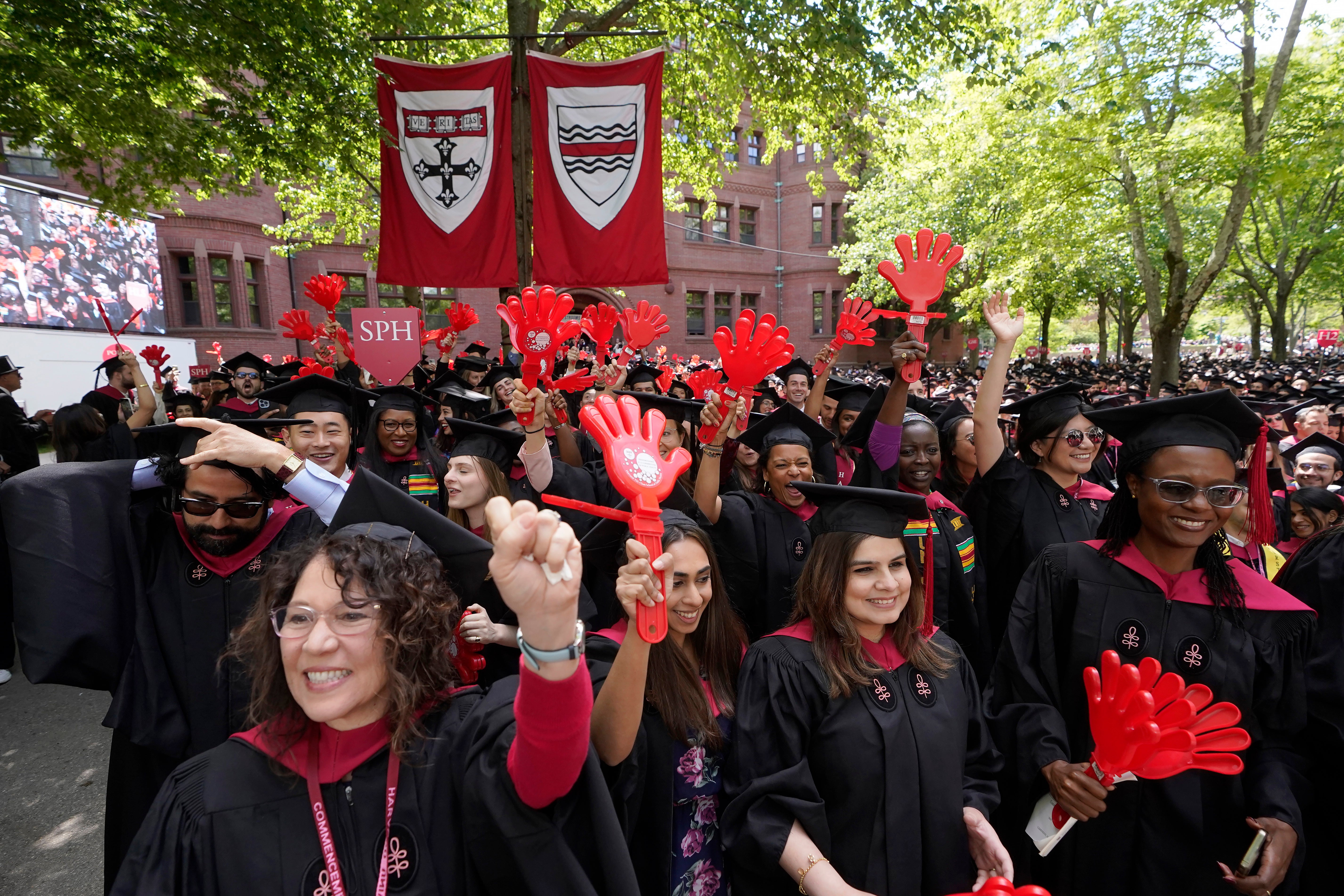Borrowers are reassessing their budgets as student loan payments resume after pandemic pause
Millions of Americans must start repaying their federal student loans again in October, with monthly payments averaging hundreds of dollars a month

Millions of Americans must start repaying their federal student loans again in October, with monthly payments averaging hundreds of dollars a month. To get ready, borrowers are cutting expenses, taking on additional work, and looking for options to reduce their monthly payments.
Megan McClelland, 38, said she has started asking for October shifts with a catering company and a winery to help supplement her income.
McClelland's main job is as a counselor at Petaluma High School in California. During the more than three years payments were suspended because of the pandemic, she paid off her car loan and was able to save for the first time. She'll put the $235 she was spending on her car payment toward her student loan, but that still leaves another $270 or so she'll have to reallocate or earn.
“It had been a huge relief the past few years to not have that financial burden,” she said. “In the next months, I'm looking to see where I can scale back in my budget. Probably less going out to eat, and more picking up side gigs.”
Justin Cole, 35, of Little Rock, Arkansas, said he doesn't know how he's going to come up with the $166 a month he'll owe starting in October. That's the estimated payment on his roughly $19,000 of loans from paying for college more than 10 years ago.
“I’m already in a mountain of debt, and while I just got a raise at work, it doesn’t go into effect until we're full staffed at my family practice clinic," he said.
Cole works the front office at a medical practice, checking in patients, handling records and managing payment collection. Some of his other debt comes from medical expenses after a car accident early in the pandemic.
“If those loans were forgiven, I could finally work on getting my credit up and actually saving money for once,” he said. “If they were forgiven out of the blue, I'd be ecstatic.”
The Supreme Court in July rejected a plan by President Joe Biden's administration to wipe away $400 billion in student loan debt.
For now, Cole has applied for adjustments to his payments based on both the new SAVE plan and prior income-driven repayment options, which are listed as processing and “in review” on his account. The SAVE, or “Saving on a Valuable Education,” plan allows borrowers to make lower payments based on a percentage of their discretionary income.
His major household expenses are “rent, car payments, groceries, and utilities — the same as everybody else,” he said.
Not yet clear is how millions of people suddenly having less discretionary income might affect the economy.
On an earnings call last month, the chief financial officer of Target said that student loan payments restarting will “put additional pressure on the already-strained budgets of tens of millions of households,” a sentiment echoed by the financial chiefs of Best Buy and other retailers.
In the Federal Reserve’s latest survey of economic conditions, one restaurant-industry observer in Boston said workers are taking on more hours, and, for the first time, credit card debt has topped $1 trillion. According to credit bureau TransUnion, more than half of student loan holders added credit card debt during the pandemic. Meanwhile, consumer savings, which peaked in 2021, are on the decline.
McClelland qualifies for Public Service Loan Forgiveness as a public school teacher who will have worked in the field for 10 years next March. She's putting her loans in order to hopefully receive that cancellation next year. The program erases remaining debts for federal student loan holders who work in public service while making 10 years of payments.
“I only have six payments to go, but it's still stressful,” she said. “I have to find about $500 a month starting next month towards this payment that I haven’t had in so long.”
The Public Service Loan Forgiveness program is one of several avenues for relief still available to many with student debt. After Biden's original plan for forgiveness was struck down by the Supreme Court in July, the White House has said it will use the Higher Education Act to bring cancellation to more borrowers. It's currently undergoing a process known as “negotiated rule-making” to determine the details of that plan.
Other sources for relief for borrowers include: false certification, borrower defense, closed school, total/permanent disability discharges, and alternate repayment programs like income-driven repayment.
McClelland, for her part, said she now spends a lot of time counseling high school students on how to avoid taking on burdensome loans.
“I had no financial guidance when I was younger, from my own parents or from school," she said. "I didn’t ever understand the long term impact.”
Despite working while in school and since — moonlighting at Starbucks, wineries and restaurants as well as counseling — McClelland still has a balance of about $38,000 in debt, from original loans of $10,000 towards her undergraduate studies and $40,000 for her masters in counseling at Sonoma State.
“I knew I wanted to go to college, and my parents didn't have any money,” McClelland said. “I tell kids all the time, openly, ‘As someone who was once in your shoes, I highly recommend finding a way to avoid taking out loans.’ When you’re 17 or 18 years old, you think, ‘Oh, sure, I’ll figure this out.’ Then it's frustrating to still be in this financial situation."
___
The Associated Press receives support from Charles Schwab Foundation for educational and explanatory reporting to improve financial literacy. The independent foundation is separate from Charles Schwab and Co. Inc. The AP is solely responsible for its journalism.